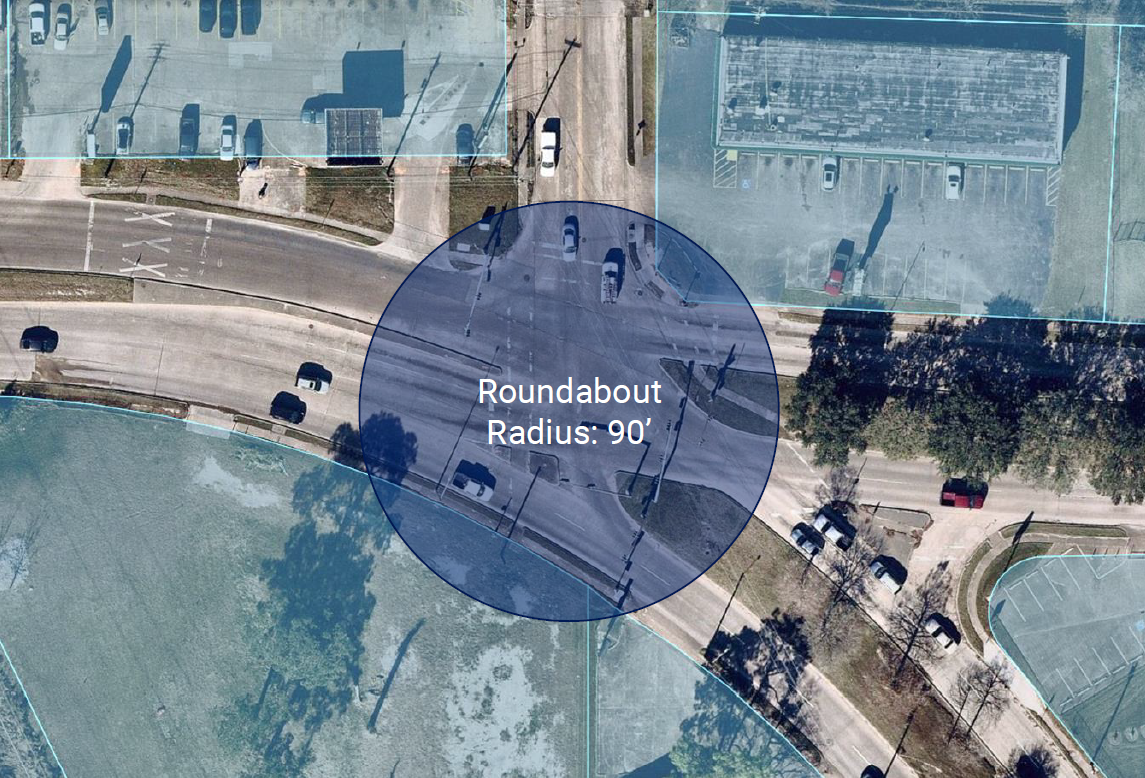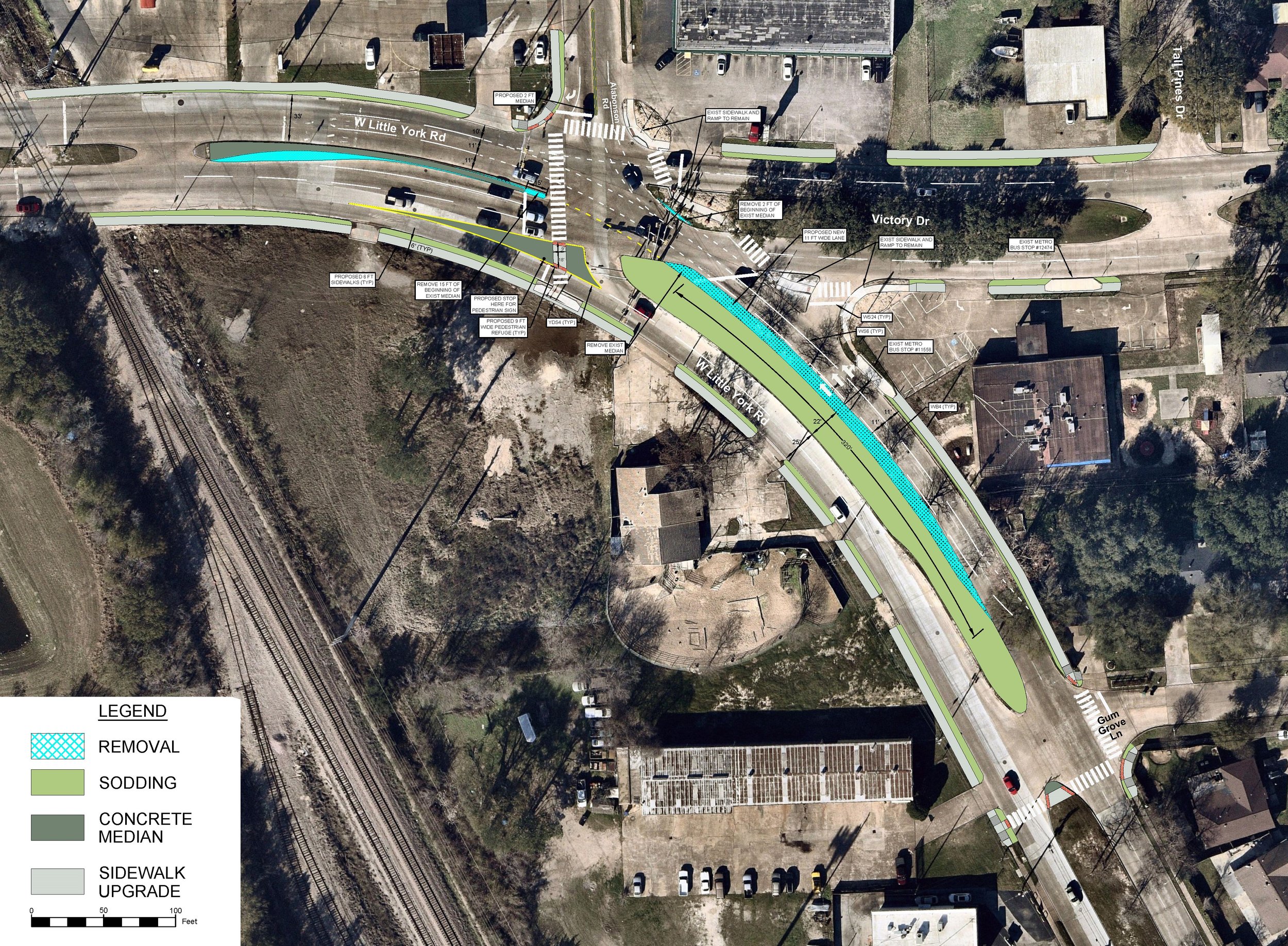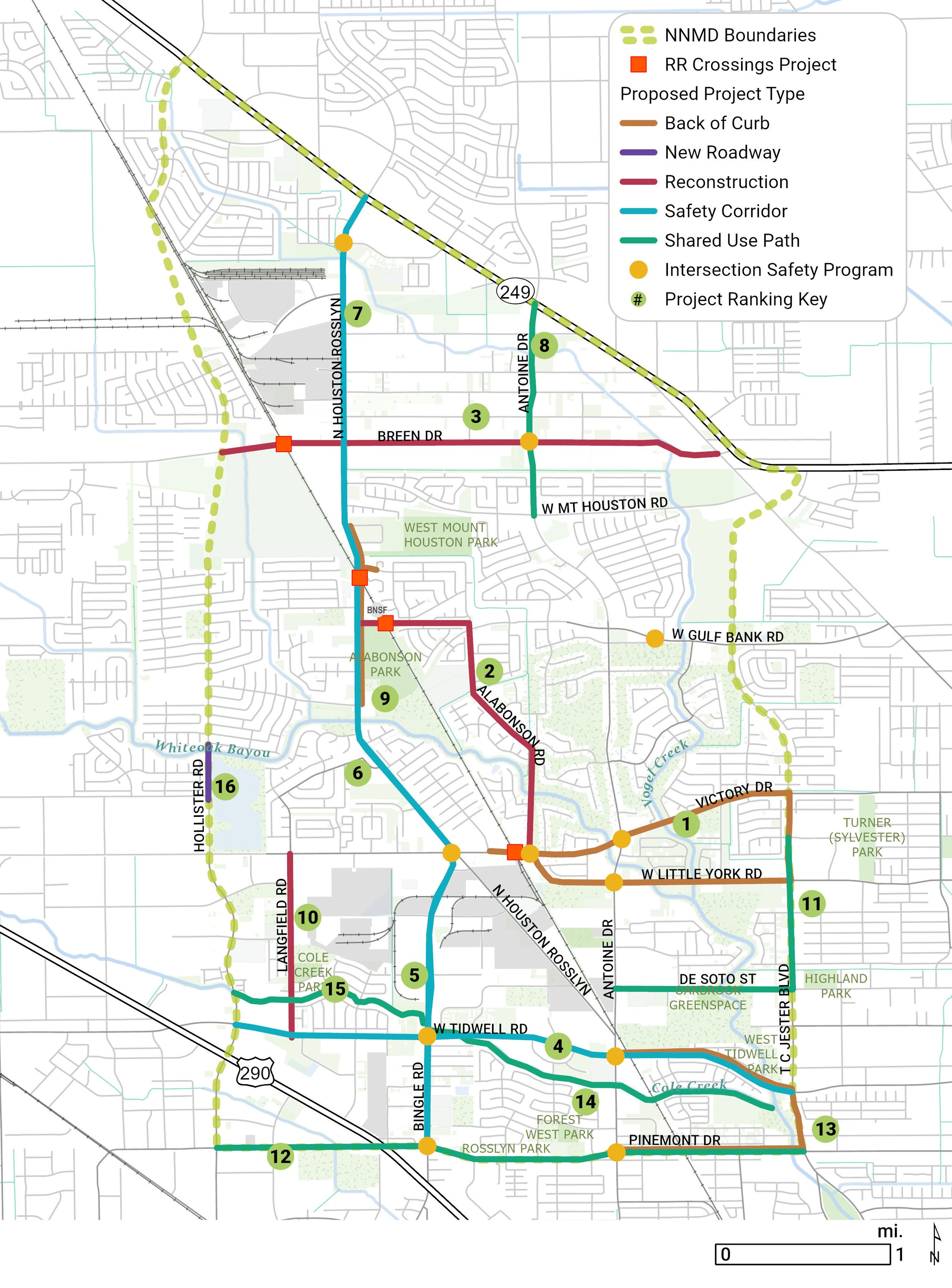Victory Drive and Alabonson Intersection Analysis
Transportation safety is a top priority for the City of Houston and Near Northwest Management District (NNMD). In response to the 35 vehicle crashes that occurred at or near the study area intersection from 2019 to 2021, including one fatal and two minor injury crashes, safety analysis and intersection design at this intersection was requested. The proposed design by TGC aims to not only enhance traffic flow but also increase safety for all roadway users. The study area included the intersection of W. Little York Road, Alabonson Drive, and Victory Drive, and study objectives and outcomes involved the development of options in order to achieve the following:
Improve safety for all roadway users, including pedestrians, cyclists, and motorists. The high number of vehicle crashes, including one fatal and three minor injury crashes, underscores the urgent need for action to prevent further crashes and enhance safety at this location.
Better align the intersection geometry: The current layout of the intersection may contribute to confusion and congestion, which in turn can increase the risk of crashes. By improving the alignment of the intersection, the flow of traffic can be better managed, and the risk of collisions can be reduced.
Reduce congestion at the intersection: In addition to improving safety, the proposed improvements also aim to reduce congestion at the intersection. By implementing changes to the intersection design and traffic management, traffic flow can be improved, and the risk of congestion and associated issues can be reduced.
To enhance intersection safety, safety and traffic analyses were conducted. The safety analysis examined 13 factors, such as severity, first harmful event, contributing factor, manner of collision, lights, age, and ethnicity. TGC presented four distinct options, and through a collaborative review process with NNMD, we narrowed down options to two alternatives and conducted in-depth analyses for each. Our team compared both alternatives to the following four aspects: Delay, Level of Service, Cost, and Advantages and Disadvantages. Option 1 involved adjusting the geometry of the intersection, the lane configurations, and signal phasing and timing. Option 2 proposed replacing the signalized intersection with a roundabout.
Summary results highlighted that by 2027, Option 1 will result in an overall Level of Service LOS D in both AM and PM peak. The roundabout will operate with an overall LOS B in AM peak and LOS C in PM peak.
Sectors: Transportation Safety Analysis; Transportation Modeling & Traffic Analysis; Bicycle & Pedestrian Facilities
Services: Crash Analysis, Safety Countermeasure, Traffic Planning, Traffic Engineering, Microsimulation
Explore More Projects
For additional information or questions, contact TGC to learn more about our services, our team, and our mission to connect capital to communities across Texas and beyond.






